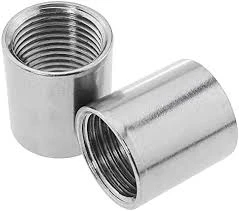-
Cangzhou Yulong Steel Co., Ltd.
-
Phone:
+86 13303177267 -
Email:
admin@ylsteelfittings.com
- English
- Arabic
- Italian
- Spanish
- Portuguese
- German
- kazakh
- Persian
- Greek
- French
- Russian
- Polish
- Thai
- Indonesian
- Vietnamese
- Zulu
- Korean
- Uzbek
- Hindi
- Serbian
- Malay
- Ukrainian
- Gujarati
- Haitian Creole
- hausa
- hawaiian
- Hebrew
- Miao
- Hungarian
- Icelandic
- igbo
- irish
- Japanese
- Javanese
- Kannada
- Khmer
- Rwandese
- Afrikaans
- Albanian
- Amharic
- Armenian
- Azerbaijani
- Basque
- Belarusian
- Bengali
- Bosnian
- Bulgarian
- Catalan
- Cebuano
- China
- China (Taiwan)
- Corsican
- Croatian
- Czech
- Danish
- Esperanto
- Estonian
- Finnish
- Frisian
- Galician
- Georgian
- Kurdish
- Kyrgyz
- Lao
- Latin
- Latvian
- Lithuanian
- Luxembourgish
- Macedonian
- Malgashi
- Malayalam
- Maltese
- Maori
- Marathi
- Mongolian
- Myanmar
- Nepali
- Norwegian
- Norwegian
- Occitan
- Pashto
- Dutch
- Punjabi
- Romanian
- Samoan
- Scottish Gaelic
- Sesotho
- Shona
- Sindhi
- Sinhala
- Slovak
- Slovenian
- Somali
- Sundanese
- Swahili
- Swedish
- Tagalog
- Tajik
- Tamil
- Tatar
- Telugu
- Turkish
- Turkmen
- Urdu
- Uighur
- Welsh
- Bantu
- Yiddish
- Yoruba

Nov . 07, 2024 05:28 Back to list
en1092 flange dimensions
Understanding EN 1092 Flange Dimensions
Flanges are critical components in piping systems, providing a means to connect pipes, valves, pumps, and other equipment. They come in various standards and specifications, with EN 1092 being one of the most widely adopted standards in Europe and beyond. This article will explore the dimensions of EN 1092 flanges, key types, and their applications.
EN 1092 refers to the European standard for flanges, specifying dimensions, tolerances, and testing methods. The standard covers several types of flanges, including blind, slip-on, threaded, and welding neck flanges. Each type serves distinct purposes and has unique design characteristics, but all are essential for ensuring the integrity and performance of piping systems.
One of the primary dimensions in the EN 1092 standard is the nominal diameter (DN), which indicates the flange size. The standard provides a range of DN sizes from DN 10 up to DN 600 and beyond. The nominal pressure (PN) rating is another critical dimension, indicating the pressure capacity of the flange, which typically ranges from PN 2.5 to PN 40. Understanding these dimensions is vital for selecting the right flange for specific applications, as they determine compatibility with pipes and pressure ratings in the system.
Flange Types and Their Dimensions
Different types of EN 1092 flanges have specific dimensional characteristics. For example, the welding neck flange is designed with a long neck that transitions into the pipe, allowing for a stronger weld. The dimensions of this flange include the outside diameter (OD), the thickness of the flange, bolt hole spacing, and the number of bolt holes, which commonly correlate with the size of the flange.
en1092 flange dimensions

Blind flanges, on the other hand, are solid discs without a hole in the center, used to seal the end of a piping system. Their dimensions also adhere to the EN 1092 standard, detailing the thickness, OD, and the diameter of the bolt holes. Each type of flange has a specific set of dimensions for both the flange face and the bolt circle, ensuring a proper fit and function within the piping system.
Importance of Compliance
Choosing flanges that comply with the EN 1092 standard is essential for several reasons. First, it ensures compatibility among various piping components, facilitating maintenance and repairs. Second, it guarantees that the flanges meet minimum safety and performance criteria, reducing the risk of leaks and structural failures. Third, compliance with standards is often a regulatory requirement, making it critical for projects in many industries.
Conclusion
In summary, the EN 1092 standards play a vital role in the design and selection of flanges used in piping systems. Understanding the various flange dimensions—including nominal diameter, pressure rating, and type—is crucial for engineers and professionals involved in pipe installation and maintenance. By adhering to these standards, industries can ensure the reliability, safety, and efficiency of their piping systems, ultimately leading to enhanced operational performance and reduced risks. Whether for water supply, chemical transport, or industrial processing, the importance of proper flange selection cannot be overstated.
Latest news
-
ANSI 150P SS304 SO FLANGE
NewsFeb.14,2025
-
ASTM A333GR6 STEEL PIPE
NewsJan.20,2025
-
ANSI B16.5 WELDING NECK FLANGE
NewsJan.15,2026
-
ANSI B16.5 SLIP-ON FLANGE
NewsApr.19,2024
-
SABS 1123 FLANGE
NewsJan.15,2025
-
DIN86044 PLATE FLANGE
NewsApr.19,2024
-
DIN2527 BLIND FLANGE
NewsApr.12,2024
-
JIS B2311 Butt-Welding Fittings LR/SR 45°/90° /180°Seamless/Weld
NewsApr.23,2024











